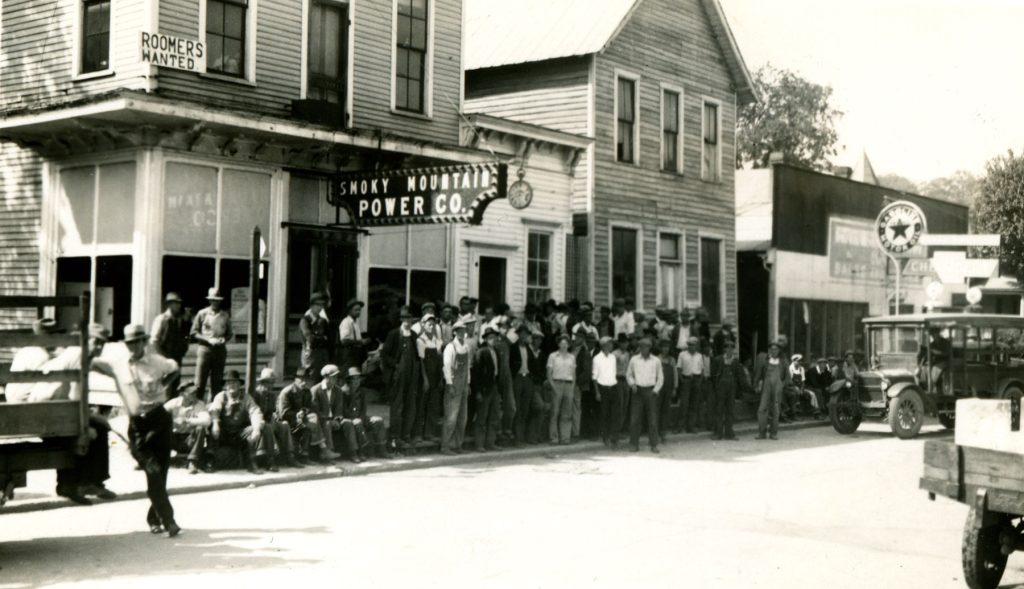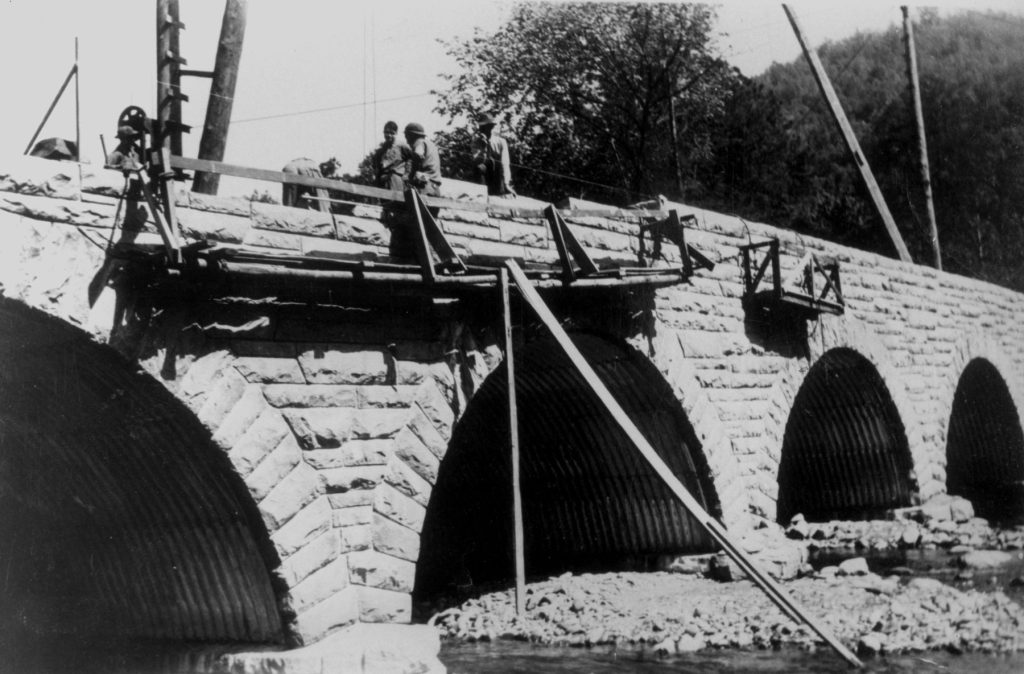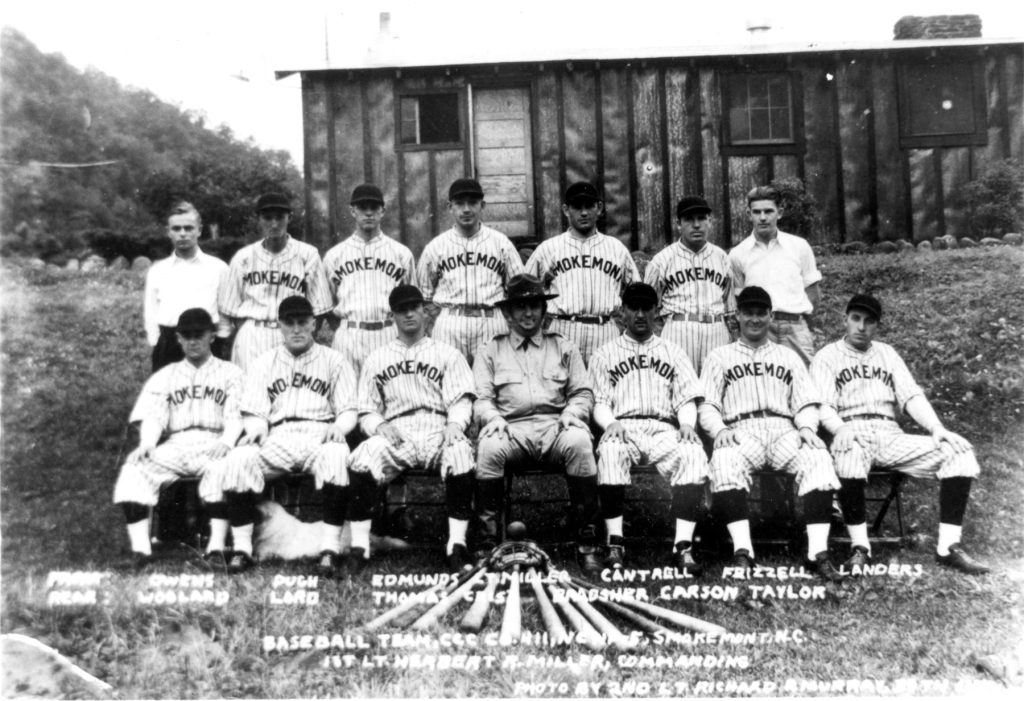
By Reagan Lane
Today, Great Smoky Mountains National Park is the most visited national park in the United States, but it was once at risk of being destroyed before it even existed. With the industrial boom from World War I in the early 20th century, natural resources across the country were being consumed faster than they could be replenished. The extensive logging industry in the Smoky Mountains resulted in great habitat losses and runaway erosion, which devastated the native wildlife in mountain streams. As much as 80 percent of the Smokies landscape was ultimately clearcut during this period. Meanwhile, young men were searching unsuccessfully for employment opportunities, creating challenging times for many local communities.

How could these seemingly intractable issues be resolved? Franklin D. Roosevelt proposed that they could both be handled at the same time. Thus, the Civilian Conservation Corps was created. In March of 1933, Congress approved the employment of 250,000 young men for labor-based work. This program not only targeted the lack of jobs for young men in the South in the midst of the Great Depression but also addressed the growing risk of environmental destruction. Eligible men were relocated to camps, where they would aid in the creation of city, state, and national parks and help restore the land by planting trees, addressing erosion, and fighting fires.
Around 4,000 young men eventually relocated to 22 camps around the Smoky Mountains, where they began nine years of demanding work. The camps were established on land that had only recently been officially chartered as a national park by Congress. The move was the culmination of a years-long campaign involving significant local support from residents of North Carolina and Tennessee, but there was still much to do to restore the logged areas and create the necessary trails and infrastructure.

As they did elsewhere, CCC camps in the Smokies operated like army camps, putting these young men on a rigid schedule under the guidance of experienced military officers. As they got to work, the young men were able to secure a stable source of income and develop skills that would outlast their time in the CCC. Understanding the benefit of keeping workers happy, camp leaders also provided many recreational opportunities, such as swimming, baseball, and boxing. Tournaments between neighboring camps became a common occurrence, creating a strong sense of good-natured rivalry and community in the young men.
Beyond providing workers with a stable income and living environment, the CCC camps in the Smokies created an economic boost for the surrounding communities.
“The most important impact for local communities would be on the economy,” explained Dr. Margaret Brown, author of The Wild East: A Biography of the Great Smoky Mountains. “The Army bought food locally, and a sudden influx of all those hungry, hard-working young men would have been a boon for farmers.”
Farmer stands and local shops provided much of the food needed to feed the young men, and supplies for projects were often purchased from local vendors. In an extremely unpredictable economy, this was life-changing for many families.

The legacy of the CCC in the Smokies can still be seen today. While working in the CCC, workers built everything from trails and bridges to gift shops and ice cream stands. In the Great Smoky Mountains, CCC workers constructed many of the notable features of the park, including the four-arch Elkmont Bridge, and worked on the preservation of Cable Mill. According to Dr. Brown, the CCC profoundly changed the region and the South by turning both state parks and the national park into thriving tourist destinations.
“Like the Smokies, many state parks were set aside during the 1920s but remained undeveloped,” said Dr. Brown. “After World War II, the GI Bill and the Baby Boom created a healthy middle class in the South, many of whom wanted to vacation in the region. The trails, roads, and picnic shelters built by the CCC made a whole industry ready for what was to come—enormous visitation.”
The CCC developed many of the notable features of today’s state and national parks and protected not only the beauty of the land but the communities living within it. The program provided jobs and stable living to a generation of young men and an economic boost that the community desperately needed. Without their hard work and determination to survive during a struggling time, the United States would not have been gifted these protected areas to enjoy.
Reagan Lane is an intern with GSMA for the summer of 2022. She is a history major at Brevard College with an interest in a career in the National Park Service. She has a passion for educating people of all ages on the history of public lands.
Subscribe to get the latest posts sent to your email.
The Great Smokies Welcome Center is located on U.S. 321 in Townsend, TN, 2 miles from the west entrance to Great Smoky Mountains National Park. Visitors can get information about things to see and do in and around the national park and shop from a wide selection of books, gifts, and other Smokies merchandise. Daily, weekly, and annual parking tags for the national park are also available.